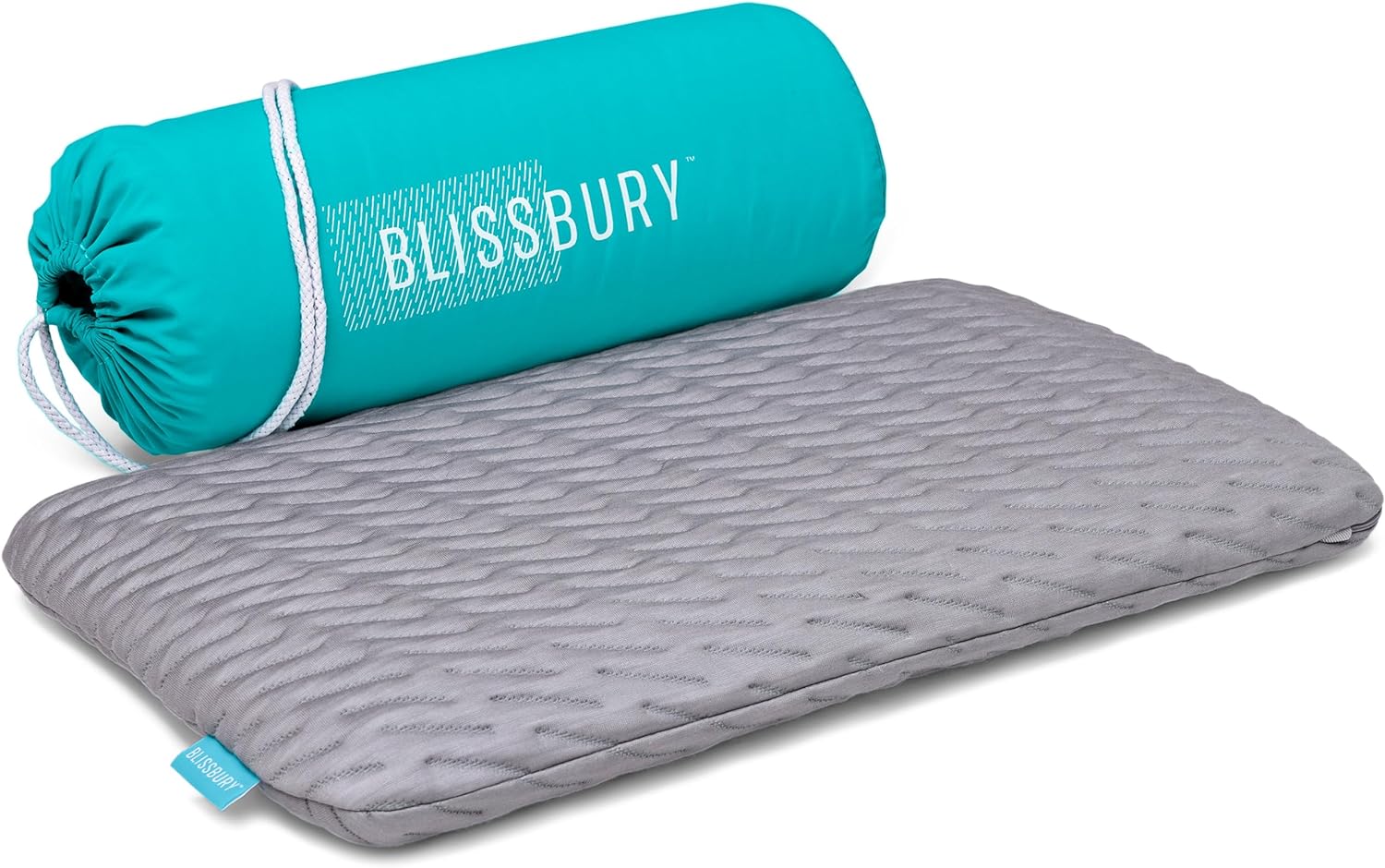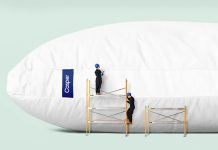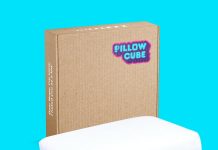Flying can be a tiring and uncomfortable experience, especially when it comes to getting some much-needed sleep. That’s where having your own travel pillow can make a world of difference. In this article, we will be sharing some invaluable tips on how to maximize your comfort and make the most out of your flying experience with your own travel pillow. From finding the perfect pillow to ensuring it’s clean and ready for use, we’ve got you covered. Say goodbye to restless flights and hello to a well-rested journey with these helpful tips for flying with your own travel pillow.
Review contents
Choosing the Right Travel Pillow
Consider the Size and Shape
When choosing a travel pillow, it is important to consider the size and shape that will provide the most comfort for your journey. Travel pillows come in various shapes, including U-shaped, rectangular, and circular. U-shaped pillows are popular for supporting the neck, while rectangular or circular pillows may provide more versatility in supporting different parts of the body. Additionally, consider the size of the pillow, ensuring it is compact enough to fit easily into your carry-on bag without taking up too much space.
Determine the Material
The material of the travel pillow is another crucial factor to consider. Different materials offer varying levels of comfort and support. Common materials used in travel pillows include memory foam, microbeads, and polyester. Memory foam pillows contour to the shape of your neck and are known for their comfort. Microbead pillows offer firm support while still being lightweight. On the other hand, polyester pillows are hypoallergenic and easy to clean. Consider your personal preferences and needs when selecting the material for your travel pillow.
Check for Adjustable Features
Travel pillows with adjustable features can greatly enhance your comfort during the journey. Look for pillows with adjustable straps or clasps that allow you to change the tightness and position of the pillow. Adjustable pillows can be positioned to provide support exactly where you need it, whether it’s under your chin, against your shoulder, or around your neck. Having the ability to customize your pillow’s fit ensures a more enjoyable travel experience.
Packing and Carrying the Travel Pillow
Use a Compact Carrying Bag
To make traveling with your pillow more convenient, it is advisable to use a compact carrying bag. The bag should be the appropriate size to comfortably fit your travel pillow while still leaving enough room for other essential items in your carry-on. Look for a bag with a secure closure, such as a zipper, to prevent your pillow from accidentally falling out or getting damaged.
Attach it to Your Carry-On
To avoid losing or misplacing your travel pillow during your journey, consider attaching it securely to your carry-on bag. Many travel pillows come with clips or straps that can be easily attached to the handle or strap of your luggage. This way, you will have easy access to your pillow whenever you need it, and it won’t take up valuable space inside your bag.
Consider Inflation and Deflation Options
Some travel pillows are inflatable, meaning they can be easily inflated and deflated as needed. Inflatable travel pillows take up minimal space when deflated, making them highly portable. Look for a pillow with a reliable inflation valve that allows for quick and easy inflation and deflation. This feature is particularly beneficial if you are tight on space in your luggage or if you prefer a pillow with adjustable firmness.
Using the Travel Pillow on the Plane
Finding the Right Position
Finding the perfect position for your travel pillow on the plane is key to ensuring maximum comfort. For U-shaped neck pillows, position the pillow around the back of your neck and let the curves of the pillow support your head. If you’re using a rectangular or circular pillow, experiment with different positions to find the one that alleviates any tension or discomfort. Remember to adjust the tightness of any adjustable straps to ensure a secure fit.
Using the Pillow for Lumbar Support
Sitting for long periods on a plane can cause discomfort and strain on your lower back. To prevent this, consider using your travel pillow for lumbar support. Simply place the pillow against the small of your back, where it can fill any gaps between your spine and the seat. This added support can help maintain a more neutral sitting posture and alleviate lower back pain during the flight.
Adjusting the Pillow for Personal Comfort
Everyone has different comfort preferences, so it’s important to adjust the travel pillow to suit your specific needs. If the pillow feels too firm, try giving it a gentle squeeze or adjust the inflation level if it is inflatable. If you find the pillow isn’t providing enough support, consider adding extra padding by tucking a small blanket or clothing under the pillow. Don’t be afraid to make small adjustments until you find the perfect level of comfort for your journey.
Maintaining Hygiene and Cleanliness
Washing the Pillow Cover
Maintaining a clean travel pillow is essential for your comfort and overall hygiene. Most travel pillows come with removable and washable covers. Follow the manufacturer’s instructions for washing the cover to ensure it remains in good condition. Alternatively, invest in a travel pillow with a cover made from antimicrobial or moisture-wicking fabric, which can help prevent the accumulation of sweat and odors.
Using a Pillowcase
For an additional layer of cleanliness, consider using a pillowcase on your travel pillow. This will further protect the pillow and keep it clean during your journey. Choose a pillowcase that is easy to remove and wash, and opt for a fabric that is comfortable against your skin, such as cotton or silk. Remember to pack an extra pillowcase or two, especially for longer trips, to ensure you always have a clean cover.
Consider Using a Pillow Protector
If you are particularly concerned about hygiene, using a pillow protector can provide an extra layer of protection for your travel pillow. Pillow protectors are designed to safeguard pillows against stains, spills, and allergens. They are usually made from waterproof or water-resistant materials, ensuring your pillow stays dry and clean throughout your journey. Look for a protector that is easy to clean and fits securely around your travel pillow.
Being Mindful of Others
Using the Pillow Respectfully
While your travel pillow is meant to enhance your comfort during the flight, it’s essential to use it respectfully and considerately. Be mindful of the personal space of fellow passengers and avoid using your pillow in a way that may invade their space or cause discomfort. It is also courteous to remove your travel pillow when not in use, especially during meal times or when getting up to stretch your legs.
Avoiding Taking Up Excessive Space
When using a travel pillow, it’s important to be mindful of the space it occupies. Avoid hogging the armrests or taking up more than your fair share of seating area. If you’re using a larger pillow, such as a body pillow, consider utilizing the overhead bin for storage during the flight to ensure everyone has adequate space for a comfortable journey.
Considerate Usage in Close Quarters
In a crowded flight, it is essential to use your travel pillow in a considerate manner, especially in close quarters. Be aware of the people sitting next to you and adjust the position of your pillow accordingly, so it doesn’t infringe on their space. Additionally, avoid excessive movement or readjustment of the pillow that may disturb your neighboring passengers. Being considerate will make the flight more pleasant for everyone on board.
Staying Comfortable During Long Flights
Using the Pillow for Neck Support
One of the main purposes of a travel pillow is to provide neck support. Adjust your travel pillow to make sure it adequately supports your neck and prevents it from falling to the side during sleep. Placing the pillow under your chin can help maintain a more natural alignment of your head and neck, reducing strain and preventing stiffness upon waking up.
Utilizing the Pillow for Napping
Long flights often call for a much-needed nap. Your travel pillow can be a valuable asset in helping you sleep more comfortably. Lean your seat back slightly and position the pillow against the seat or in your lap to create a soft and supportive resting place for your head. By using your travel pillow effectively, you can improve the quality of your sleep and arrive at your destination feeling more refreshed.
Enhancing Your Sleep Environment
Creating a conducive sleep environment on a plane can be challenging, but with the right tools, it’s possible. In addition to your travel pillow, consider bringing an eye mask and earplugs to block out light and noise. This combination can help foster a peaceful and restful sleep, even in a noisy cabin. Remember to adjust the overhead air vent and dress comfortably to achieve optimal sleep conditions.
Dealing with Security Measures
Prepare for Security Screening
When traveling with a travel pillow, it’s important to be prepared for security screening. Remove the pillow from your bag and place it in a separate bin for X-ray scanning. If your pillow is inflatable, deflate it before going through security and then reinflate it once you have cleared the screening process. Familiarize yourself with the specific security regulations of your departure and destination airports to ensure a smooth and hassle-free experience.
Ensuring Smooth Check-in
Before you arrive at the airport, make sure that your travel pillow complies with the airline’s baggage regulations. Some airlines may have specific size or weight restrictions for carry-on items. Ensure that your pillow meets these requirements to avoid any issues during check-in. Additionally, double-check your airline’s policy regarding the use of travel pillows during the flight, as some may have restrictions or guidelines for their use.
Understanding Rules and Regulations
Different airlines and airports may have varying rules and regulations regarding the use of travel pillows during the flight. Familiarize yourself with these guidelines to ensure a smooth journey. Some airlines may allow the use of travel pillows throughout the flight, while others may restrict their use during takeoff and landing. Knowing the rules beforehand will help you plan accordingly and avoid any inconvenience.
Exploring Alternative Pillow Options
Consider Inflatable Pillows
If space is a concern, or if you prefer a more customizable pillow, inflatable pillows can be a great option. These pillows are designed to be compact and easily inflated to the desired level of firmness. When not in use, simply deflate the pillow and stow it away in your bag. Inflatable pillows are lightweight, easy to pack, and can provide adequate support for your head and neck during the flight.
Try Memory Foam Pillows
Memory foam pillows have gained popularity for their exceptional comfort and support. These pillows mold to the shape of your head and neck, providing personalized support and reducing pressure points. Memory foam pillows are often more compact than traditional pillows, making them travel-friendly. They are a great choice if you prioritize comfort and want a pillow that conforms to your specific curves and contours.
Look into Neck Pillows
Neck pillows have long been a popular choice for travelers. These U-shaped pillows are specially designed to provide support to the neck and prevent it from tilting or falling to the side. Neck pillows come in various materials, including memory foam, microbeads, and polyester, offering different levels of firmness and comfort. Choose a neck pillow that suits your preferences and provides the necessary support for your neck and head during the flight.
Customizing Your Travel Pillow
Adding Extra Padding
If you find that your travel pillow lacks the desired level of support, consider adding extra padding to enhance its comfort. You can achieve this by tucking in a small blanket, a rolled-up sweater, or even a small pillowcase filled with clothes inside the pillow. Experiment with different types and amounts of padding until you find the perfect level of cushioning for your individual needs.
Sewing Personalized Covers
To add a personal touch to your travel pillow, you can sew your own custom covers. Choose fabrics that are soft, breathable, and easy to wash. Consider using colorful patterns or designs that reflect your style and personality. Sewing personalized covers also gives you the opportunity to create additional pockets or compartments to store small items such as earphones or travel-sized toiletries. Let your creativity guide you and create a travel pillow cover that reflects your unique taste.
Adding Fragrance or Essential Oils
For an extra touch of relaxation and comfort, consider adding fragrance or essential oils to your travel pillow. Choose calming scents such as lavender or chamomile, which can promote relaxation and help you unwind during the flight. Remember to use oils sparingly and choose scents that won’t be overpowering or bothersome to fellow passengers. A subtly scented travel pillow can create a soothing and calming environment for your journey.
Taking Care of Your Neck and Back
Maintaining Proper Posture
Maintaining proper posture is crucial for preventing neck and back pain during long flights. Avoid slouching or slumping in your seat, as this can strain your neck and back muscles. Sit upright with your shoulders relaxed and aligned with your spine. Use your travel pillow to support your neck and maintain a neutral spine. Taking breaks and stretching periodically can also help alleviate any stiffness or discomfort.
Doing Simple Stretches
Stretching during the flight can help alleviate muscle tension and prevent stiffness. Perform simple stretches for your neck, shoulders, and back while seated. Gently tilt your head from side to side, roll your shoulders forward and backward, and perform seated twists to stretch your back muscles. These stretches can improve circulation, relieve tension, and promote overall comfort during long flights.
Taking Breaks from Sitting
Sitting for extended periods can contribute to discomfort and muscle stiffness. Whenever possible, take breaks from sitting and walk around the cabin. Use this time to stretch your legs, move your body, and improve blood circulation. Additionally, consider doing some light exercises, such as calf raises or ankle rotations, to keep your muscles active. Taking breaks from sitting will not only help alleviate any physical discomfort but also invigorate your mind.
In conclusion, choosing the right travel pillow is essential for a comfortable journey. Consider factors such as size, shape, and material when selecting a travel pillow that suits your needs. Proper packing and carrying methods ensure easy access to your pillow throughout the trip. Using the travel pillow correctly on the plane and maintaining hygiene is crucial for a pleasant experience. Being mindful of others, staying comfortable, and abiding by security measures will contribute to a hassle-free journey. Exploring alternative pillow options and customizing your travel pillow allows for personalization and maximum comfort. Finally, taking care of your neck and back by maintaining proper posture, doing stretches, and taking breaks from sitting ensures a more comfortable flight experience. With the right travel pillow and proper care, flying can become a more enjoyable and restful experience.



























